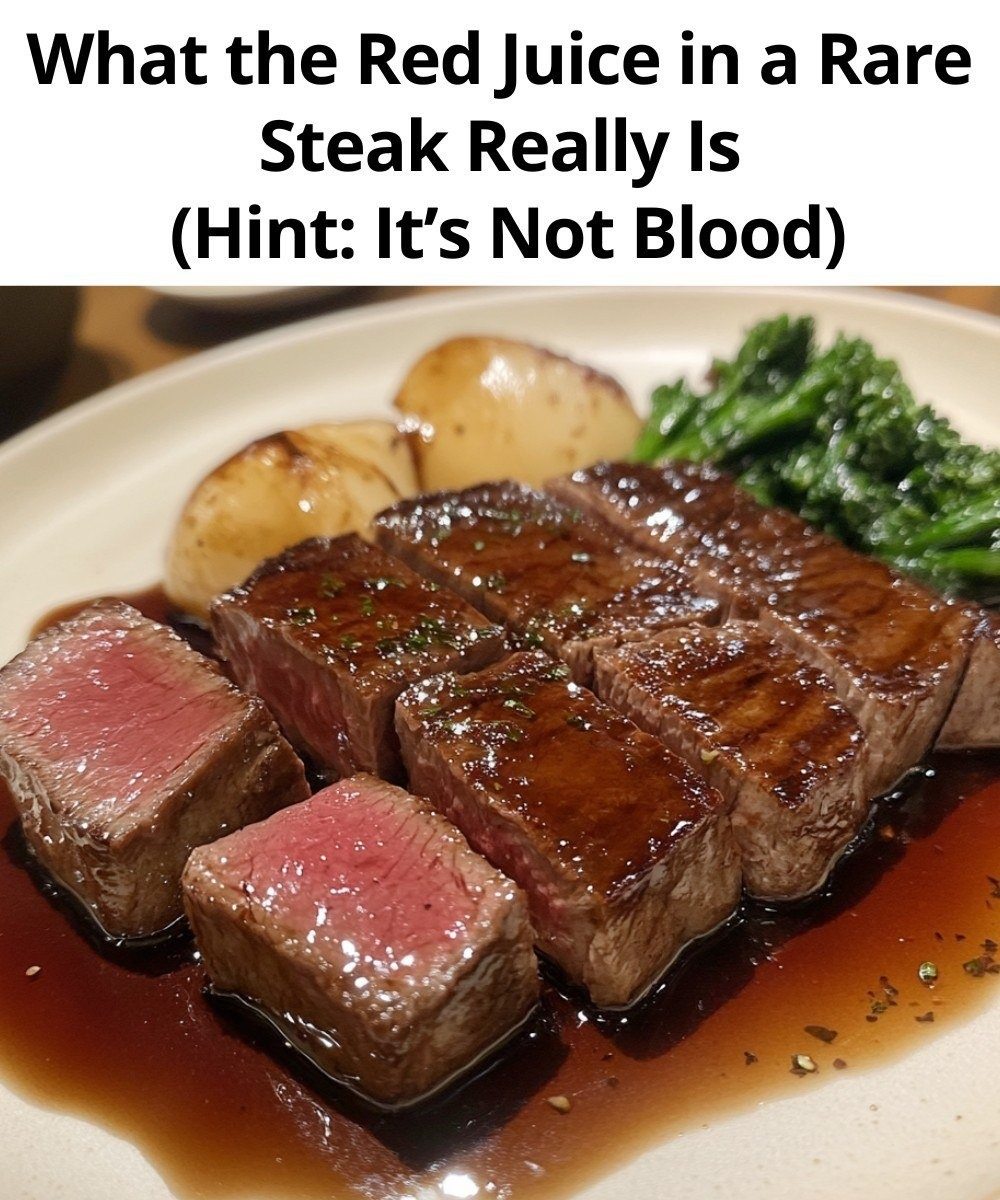Why Does It Appear Red?
The red color of the juice is a result of myoglobin’s interaction with oxygen. When myoglobin binds with oxygen, it takes on a red hue. In rare steaks, the muscle fibers are minimally cooked, and the myoglobin has not been fully altered by heat. Therefore, it retains its red color.
As the steak is cooked to a higher temperature, the myoglobin breaks down and changes its structure, causing the liquid to turn from red to a darker brown color. This is why well-done steaks do not release the same reddish juice.
Does the Red Juice Affect the Taste or Quality?
Contrary to what some people may believe, the red juice in a rare steak is completely safe to eat and doesn’t indicate that the steak is undercooked. In fact, myoglobin contributes to the flavor and juiciness of the meat.
The liquid is not just water; it contains proteins, amino acids, and other compounds that are rich in flavor. For those who enjoy rare steak, the juice adds to the overall texture and taste experience.
However, many people might be turned off by the presence of red liquid, believing it’s blood. But rest assured, it’s simply myoglobin—nothing to worry about. The presence of this juice is a sign that the steak has been cooked to a lower internal temperature, which results in a more tender and flavorful cut.
How to Cook Steak for the Best Flavor and Texture
If you want to cook steak to your preferred doneness while getting the best flavor and texture, it’s important to keep these key points in mind:
Rare Steak (120°F-125°F): When cooked to rare, the steak will have more of the red juice as myoglobin is still intact. This creates a more tender, juicy steak with a rich, meaty flavor.
Medium-Rare Steak (130°F-135°F): The steak will have a slight amount of red juice but is firmer than rare. This is the ideal level for many steak lovers who want a balance between tenderness and flavor.
Medium to Well-Done Steak: As you cook the steak longer, the myoglobin breaks down, and the juice becomes less red and more brown. While the steak becomes firmer, it may also lose some of its juiciness.
When cooking steak, be sure to rest it after cooking for a few minutes to allow the juices to redistribute within the meat. This ensures the steak remains juicy and flavorful, no matter the doneness.
Final Thoughts: Why the Red Juice Isn’t Something to Fear
The next time you see that red liquid on your rare steak, you can rest assured that it’s just myoglobin, not blood. It’s a natural part of the muscle tissue and is responsible for some of the most enjoyable flavors and textures you get from a well-cooked steak.
So, the next time you’re enjoying a rare or medium-rare steak, embrace the red juice! It’s a sign of a perfectly cooked steak that will be juicy, tender, and packed with flavor.
ADVERTISEMENT

